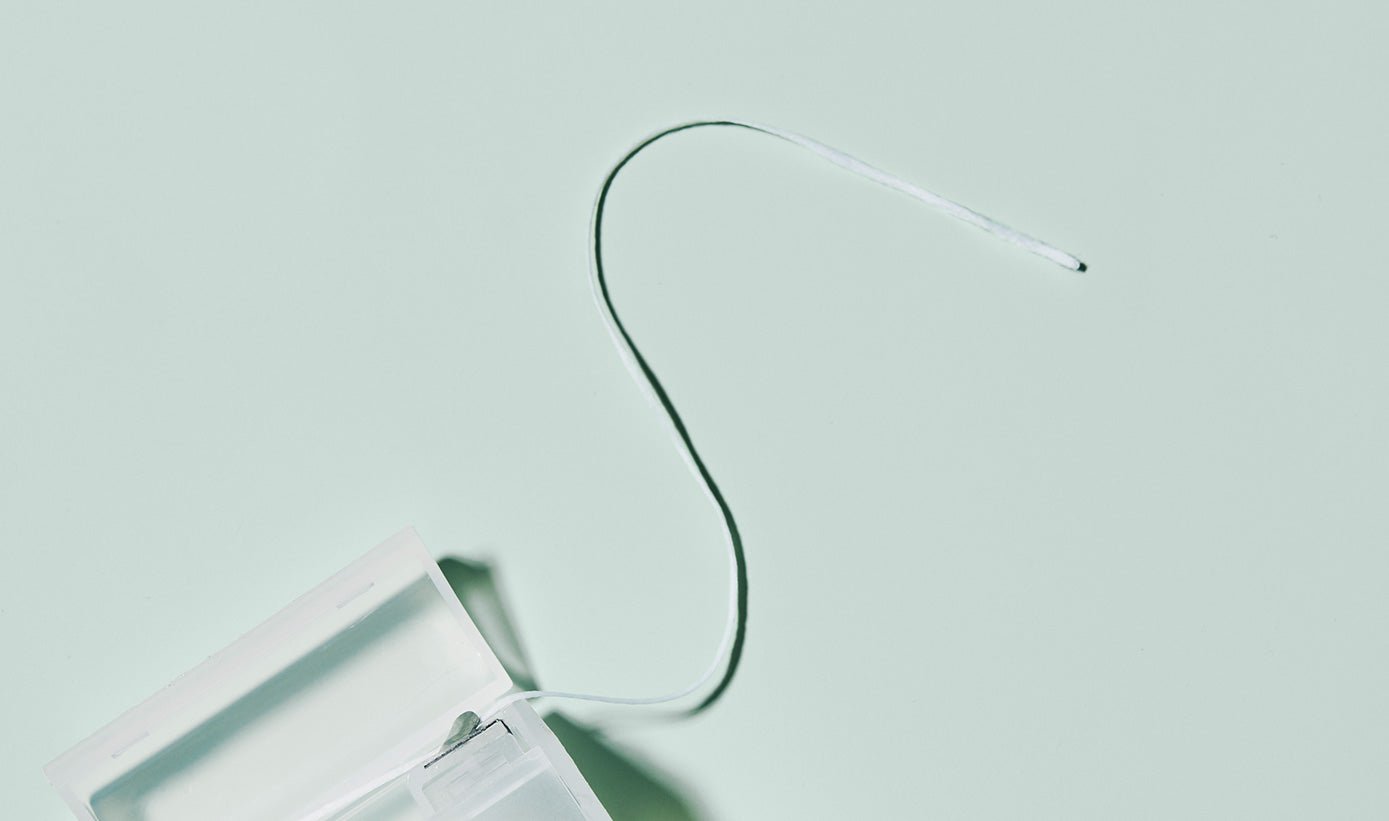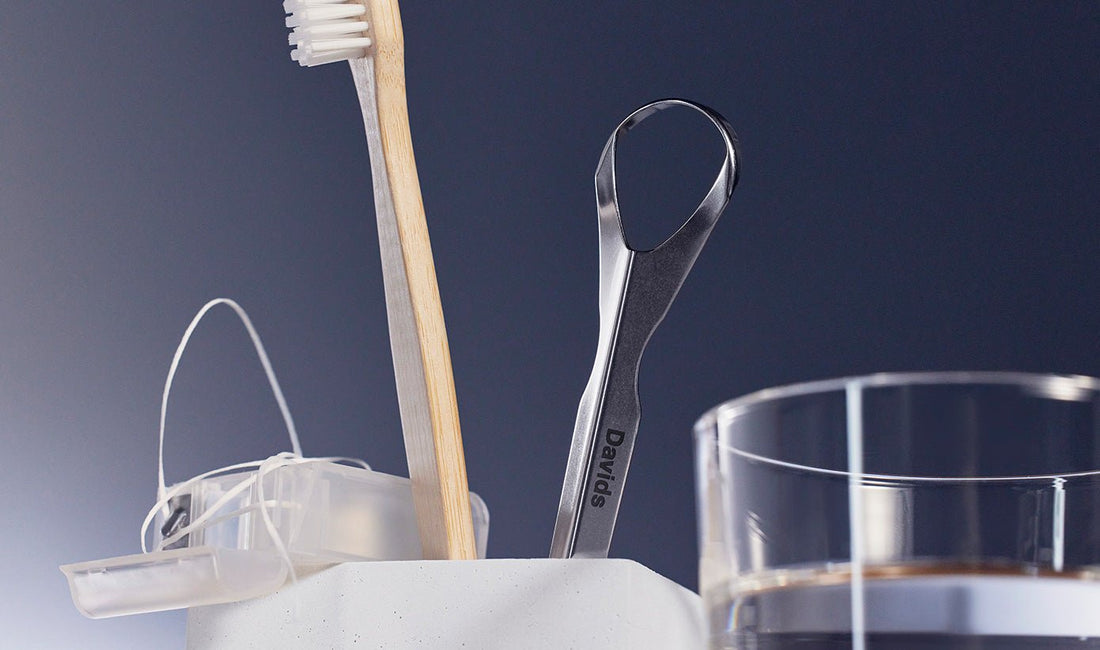Davids blog
do you need to floss? don't brush over this crucial step of your oral care routine
You’ve probably heard from your dentist that flossing is important for preventing plaque buildup, cavities, sensitivity, gum disease, and more. In other words, it’s pretty important for nurturing your holistic oral health! Whether you’re a flossing pro, a start-then-stop flosser, or an “I don’t need to floss” kind of person, it never hurts to brush up on the topic. Do you need to floss? Why is flossing important? What’s the best way to floss? What’s the best type of floss? Does the type of floss even matter? The answer is yes! All of these things matter. Don’t worry, we’re here to dive into all the specifics on flossing and explore all the ways that natural floss outperforms its conventional counterpart (hint hint, there might be a new Davids product launch on the horizon). At the end of the day, we only want what’s best for your oral and overall health, and a solid oral care routine with natural floss is the best. why flossing is important So, another dental professional has told you you need to start (or continue) flossing. You know it’s “important,” but do you know exactly why flossing is important? Many dentists estimate that brushing alone only cleans the front and back of your teeth, leaving roughly 35% of your teeth untouched. Not to mention, these untouched crevices are tight, making them the perfect place for bacteria to fester and gooey plaque to build up. If you’ve read more of our blog articles, you know that we believe in a holistic approach to oral (and overall) health. If your oral care routine neglects 35% of your teeth’s surfaces, is it truly a holistic oral care routine? Trust us, once you add a high-quality flossing routine into your life, your mouth will feel cleaner than ever before. What exactly do we mean when we say “high-quality flossing routine”? We mean one that uses top-notch techniques as well as non-toxic, natural floss. how to floss, the right way! Now, it might seem silly that we want to teach you how to floss. After all, it's pretty simple, right? Actually, flossing requires a lot of intentionality and practice! Even if you’re someone who’s been doing it for years, it’s always a good idea to brush up on your technique....because technique truly makes a difference when it comes to flossing. That being said, here are some tips to help you floss like an expert. We recommend flossing before you brush your teeth. This is because flossing dislodges stubborn particles and bacteria. Once those are loose in your mouth, we want to give your mouth a proper brushing to make sure we dispose of those dislodged pieces. Grab roughly a foot (yes, 12 whole inches) of floss, and wrap the ends around your middle fingers. You can use even more if that feels more secure and comfortable. Once it’s wrapped around your fingers, grip it between your thumb and index finger, and use your thumb to guide the floss between your teeth. Important: make a u-shape with the floss around each tooth, switching directions within each crevice to get both of the teeth that share that crevice. This u-shape is crucial, allowing you to remove as much of the plaque buildup as possible. Flossing isn’t solely about removing food from your teeth, it’s about breaking down that pesky plaque. Gently slide the floss up and down several times while maintaining the u-shape. Don’t press too hard on your gums when you slide downward....this can lead to pain and bleeding. While you’re in each crevice, try gliding the floss along the back of your tooth too, so you can target that pesky plaque buildup. A few additional pro tips: try changing the placement of the floss as much as you can, so you’re not reusing the same portion of the floss every time you enter a new crevice. Move up and down the strand to use a fresh piece for different teeth and avoid wearing one part down to the point where it nearly breaks. You can also rinse off the floss as you go to dispose of any particles. Also, you may want to try coating your floss with our premium toothpaste to increase its bacteria-fighting power! Last but certainly not least, one of the biggest tricks to flossing (and your oral care routine in general) is to slow down. We know it’s something you do every day, so it’s tempting to rush through the motions. But we really encourage you to slow down and take time to practice some mindfulness. It’s good for your oral health and mental health! why you should switch to natural floss It’s no surprise that we, a toothpaste brand, believe in natural floss over conventional floss. But we also recognize that many people may not feel passionate about (or even think about?) where their floss comes from or what it’s made of. But we’re here to change that. Here’s why. Unlike natural floss, many of the conventional floss options out there have a nylon or Teflon base coated in synthetic chemical wax. Right off the bat, this doesn’t sound like something you want to use in your daily oral care routine. You may have seen that non-toxic cookware is having a moment in the spotlight because traditional cookware has a Teflon coating. According to the EWG, Teflon is commonly called PFAS, a “forever chemical” that’s linked to many health issues. On top of the chemical issue, conventional floss is usually packaged in single-use plastic. So when you toss the floss, it’s likely to end up lingering for decades in a landfill and adding to the plastic pollution problem. If every single person in the US flossed according to ADA recommendations, roughly 2.5 billion plastic floss containers would end up in landfills each year. Sure, we know not everyone is flossing as recommended, but we think they should be! Sustainable natural floss, on the other hand, avoids toxins and utilizes sustainable packaging! A win-win for your body and the environment. If you’re wondering why we’re singing the praises of natural floss when we don’t have any on our website, all we can say right now is...STAY TUNED! For now, it never hurts to stock up on the best toothpaste. Buy Your Premium Toothpaste Now.
Learn more




